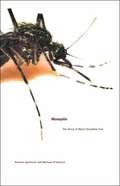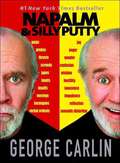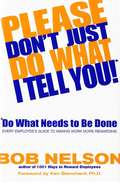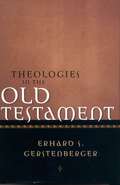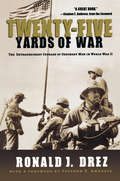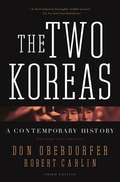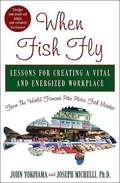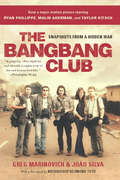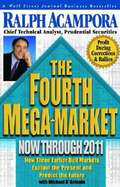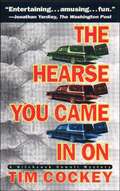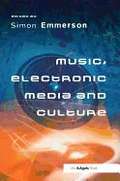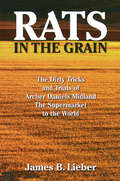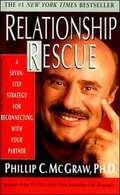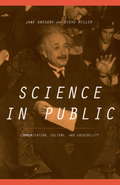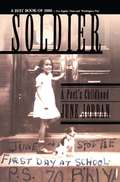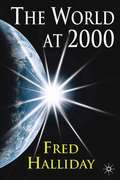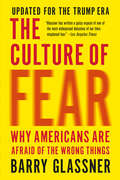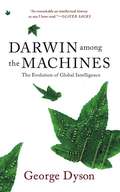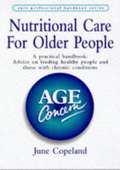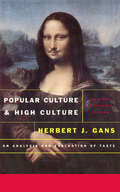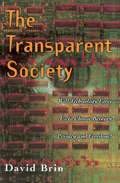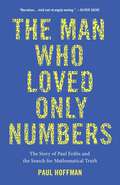- Table View
- List View
Mosquito: The Story of Man's Deadliest Foe
by Andrew SpielmanNow in paperback--a fascinating work of popular science from a world-renowned expert on mosquitoes and a prize-winning reporter.In this lively and comprehensive portrait of the mosquito, its role in history, and its threat to mankind, Spielman and D'Antonio take a mosquito's-eye view of nature and man. They show us how mosquitoes breed, live, mate, and die, and introduce us to their enemies, both natural and man-made. The authors present tragic and often grotesque examples of how the mosquito has insinuated itself into human history, from the malaria that devastated invaders of ancient Rome to the current widespread West Nile fever panic. Filled with little-known facts and remarkable anecdotes that bring this tiny being into larger focus, Mosquito offers fascinating, alarming, and convincing evidence that the sooner we get to know this pesky insect, the better off we'll be.
Mosquito: The Story of Man's Deadliest Foe
by Andrew SpielmanNow in paperback--a fascinating work of popular science from a world-renowned expert on mosquitoes and a prize-winning reporter.In this lively and comprehensive portrait of the mosquito, its role in history, and its threat to mankind, Spielman and D'Antonio take a mosquito's-eye view of nature and man. They show us how mosquitoes breed, live, mate, and die, and introduce us to their enemies, both natural and man-made. The authors present tragic and often grotesque examples of how the mosquito has insinuated itself into human history, from the malaria that devastated invaders of ancient Rome to the current widespread West Nile fever panic. Filled with little-known facts and remarkable anecdotes that bring this tiny being into larger focus, Mosquito offers fascinating, alarming, and convincing evidence that the sooner we get to know this pesky insect, the better off we'll be.
Napalm & Silly Putty
by George CarlinA hilarious new collection of razor-sharp observations from the New York Times bestselling author of Brain Droppings. Few comics make the transition from stage to page as smoothly or successfully as George Carlin. Brain Droppings spent a total of 40 weeks on the New York Times bestseller list, and this new one is certain to tickle even more ribs (and rattle a few more cages) with its characteristically ironic take on life's annoying universal truths. In Napalm & Silly Putty, Carlin doesn't steer clear of the tough issues, preferring instead to look life boldly in the eye to pose the questions few dare to ask:How can it be a spy satellite if they announce on TV that it's a spy satellite?Why do they bother saying "raw sewage"? Do some people cook that stuff?In the expression "topsy-turvy," what exactly is meant by "turvy"? And he makes some startling observations, including:Most people with low self-esteem have earned it.Guys don't seem to be called "Lefty" anymore.Most people don't know what they're doing, and a lot of them are really good at it. Carlin also waxes wickedly philosophical on all sorts of subjects, including:KIDS--They're not all cute. In fact, if you look at them closely, some of them are rather unpleasant looking. And a lot of them don't smell too good either.DEATH ROW--If you're condemned to die they have to give you one last meal of your own request. What is that all about? A group of people plan to kill you, so they want you to eat something you like? Add to the mix "The Ten Most Embarrassing Songs of All Time," "The 20th Century Hostility Scoreboard," and "People I Can Do Without," and you have an irresistibly insouciant assortment of musings, questions, assertions, and assumptions guaranteed to please the millions of fans waiting for the next Carlin collection--and the millions more waiting to discover this comic genius.
Please Don't Just Do What I Tell You! Do What Needs to Be Done: Every Employee's Guide to Making Work More Rewarding
by Bob B. NelsonThe author of the million-copy-selling 1001 Ways series shows how to get ahead by fulfilling every employers ultimate expectation. This book contains a clear message: Every boss wants an effective worker to do what most needs to be done without having to be asked. Simple? Perhaps. Easy? Not on your life. But thanks to Bob Nelson, employers and employees everywhere will be empowered by this vital message, and in the process achieve their goals and create a mutually rewarding experience. As brief, to the point, and inspiring as his previous best-selling titles, Nelsons commonsense advice can be applied to any situation, from the mailroom to the boardroom, and is illustrated with a wide array of examples and anecdotes from real life. Helping readers tap into their own intelligence, resourcefulness, and pride, Nelson demonstrates how acts of initiative both big and small can make an enormous difference in the way an employee is viewed--and rewarded--by his or her boss; he also shows how the effects of those actions benefit the entire organization. It's a perfect first day on the job book; a useful resource for any HR department; and a worthwhile investment for anyone who wants to learn more and go farther in a job, in a career, and in life.
Theologies of the Old Testament (PDF)
by Erhard GerstenbergerThis is a history of religion rather than a theological book. In the introduction, Erhard Gerstenberger argues that the Old Testament contains many different theologies and he pays attention to the context in which the Old Testament is studied. He follows this up with an outlined study of the history of Ancient Israel, and goes on to examine faith, cultic practices and ethics as illustrations of belief in God (or gods, or goddesses) in each of the different stages. The approach is essentially sociological with close attention paid to both archaeology and the biblical texts, and each chapter raises the issue of what these investigations mean for belief in the modern world.
Twenty-Five Yards of War: The Extraordinary Courage of Ordinary Men inWorld War II
by Stephen Ambrose Ronald J. DrezFrom the sinking decks of a navy cruiser to the cockpit of a doomed B-25 bomber, Ronald J. Drez takes us to the front lines of World War II. Through Drez's gripping narrative style, we meet twelve men, all ordinary soldiers, and learn what the war was like through their eyes, experiencing their own 'twenty-five yards of war.' The men in these pages represent all branches of the military who were sent on impossible missions, where they witnessed triumphs and tragedies. As a result of Drez's ten years of research and over 1,400 interviews, Twenty-Five Yards of War is a tribute to all of the soldiers who fought in World War II--those who walked away with amazing stories to tell, and those who did not make it home.
The Two Koreas: A Contemporary History
by Don Oberdorfer Robert CarlinAn acclaimed history of the Korean Peninsula from World War II to the present day North Korea is an impoverished, famine-ridden nation, but it is also a nuclear power whose dictator Kim Jong-un regularly threatens his neighbors and adversaries, the United States in particular, with destruction. Even though Kim and President Donald Trump's responses to him dominate the daily headlines, the idea that North Korea is a menace is not a new one. Indeed, ever since Korea was first divided at the end of World War II, the tension between its northern and southern halves has riveted-and threatened to embroil--the rest of the world. In this landmark history, veteran journalist Don Oberdorfer and Korea expert Robert Carlin grippingly describe how a historically homogenous people became locked in a perpetual struggle for supremacy--and how other nations including the United States have tried, and failed, to broker a lasting peace.
When Fish Fly: Lessons for Creating a Vital and Energized Workplace from the World Famous Pike Place Fish Market
by Joseph Michelli John Yokoyama"You can energize your people and delight your customers by modeling the fabulous ideas that come from the World Famous Pike Place Fish Market." -- Ken Blanchard, co-author of The One Minute Manager In this revealing business advice book, the magic of the World Famous Pike Place Fish Market proves a dynamic example of what a group of people can create when they are aligned and living a powerful vision. Here for the first time, owner John Yokoyama explains in his own words just how he transformed his business into a workplace that is renowned worldwide. When Fish Fly offers Yokoyama's cohesive strategy for achieving world famous results for owners, managers, and front-line workers alike. Once you understand the generative principles behind the World Famous Pike Place Fish Market you, too, can develop a culture that leads to excellent employee morale and legendary customer service.
The Bang-Bang Club, movie tie-in: Snapshots From a Hidden War
by Greg Marinovich Joao SilvaA gripping story of four remarkable young men—photographers, friends and rivals—who band together for protection in the final, violent days of white rule in South Africa.
Encyclopedia of the Boer War: 1899-1902 (PDF)
by Martin Marix EvansThis volume covers all aspects of the Boer War including its origins, military strategy and tactics, the main battles and sieges, the principal political and military figures, weaponry, and subjects such as the role of the railways, the treatment of the wounded, and the use of concentration camps.;The encyclopedia shows how the camps intended to house refugees became infamous concentration camps, how the peace negotiated between the Boers and the British established the conditions under which apartheid was able to flourish and how the war marked an important stage in the evolution of warfare and is often regarded as the first modern war.;A number of original documents are reprinted in this book, including the main body of the report on concentration camps and extracts from the minutes of the peace negotiations.;Entries include: Afrikaner uprisings, Battle of Elandslaagte, Battle of Elands River Post, Battle of Spioenkop, Bloemfontein, Chief Commandant Christaan Rudolf De Wet, Colonel J.Y.F. Blake, Commandant-general Louis Botha, concentration camps, General Sir Redvers Buller, The Jameson Raid, Lieutenant H.H.R. Breaker Morant, Major Frederick Russell Burnham, maps, Maxim-Vickers machine gun, Siege of Ladysmith, Siege of Mafeking, and Winston Churchill. Alternate ISBN 9781576073995
The Fourth Mega-Market, Now Through 2011: How Three Earlier Bull Markets Explain the Present and Predict the Future
by Ralph Acampora Michael D'AngeloA proven leader in the financial world explains the current bull market--and how to profit from it--by comparing it to the great bull markets of the past.Were you surprised by Wall Street's incredible performance over the past few years? Ralph Acampora wasn't. In fact, Acampora, Prudential's top technical analyst, predicted the current bullish trend--and helped countless clients profit from it. Now you can too.Acampora coined the term mega-market to describe a bull market that lasts a minimum of ten years and a maximum of eighteen years with Dow gains of between 400% and 500%. In The Fourth Mega-Market, Acampora helps readers take advantage of the staggering performance of the current market by showing its similarities with the three previous mega-markets in American history. In an entertaining and straight-forward style, and with a wealth of informative charts and graphs, he helps readers recognize patterns that can explain market performance, showing how to use technical analysis to "hear the voices" of the market. He offers valuable tips, such as how to spot and protect yourself from a correction; how psychology and politics influence the market; and how to analyze the performance of various market segments. Finally, he makes exciting predictions on just where the market will go before it ends and how it will get there, giving specific recommendations. While today's information overload keeps us on the edge of our seats, scanning the numbers for subtle clues as to the market's next seismic shift, Ralph Acampora shows us the value of a larger perspective, one that not only explains today's mega-market, but also shows us how to keep investing our money wisely and ride high on the current wave.
The Hearse You Came in On: A Hitchcock Sewell Mystery
by Tim CockeyWhat self-respecting undertaker would allow himself to get involved in a murder investigation, a series of dirty videos, a case of political blackmail, and police corruption, as well as one of the worst amateur theater productions in recent memory? None, unless your name happens to be Hitchcock Sewell, the most charming suspense hero to come along in years. And who knew an undertaker could look so good? In this fast-paced and enormously entertaining mystery, Hitch has gotten himself into more trouble than any self-respecting undertaker should.
Music, Electronic Media And Culture (PDF)
by Simon EmmersonTechnology revolutionised the ways that music was produced in the twentieth century. As that century drew to a close and a new century begins a new revolution in roles is underway. The separate categories of composer, performer, distributor and listener are being challenged, while the sounds of the world itself become available for musical use. All kinds of sounds are now brought into the remit of composition, enabling the music of others to be sampled (or plundered), including that of unwitting musicians from non-western cultures. This sound world may appear contradictory - stimulating and invigorating as well as exploitative and destructive. This book addresses some of the issues now posed by the brave new world of music produced with technology.
Rats in the Grain: The Dirty Tricks and Trials of Archer Daniels Midland, the Supermarket to the World
by James B. LieberBeneath the wholesome image of Archer Daniels Midland lie some of the dirtiest practices in American business: price-fixing, bribery, and cover-ups. Unfolding like a legal thriller, Rats in the Grain portrays the crime and punishment of ADM during the largest white-collar criminal trial of the 1990s. James Lieber profiles the witnesses, the defense lawyers and federal prosecutors, the inner workings of the Justice Department's Antitrust Division, and the unpredictable mole Lieber had access to. "A detailed account of how an influential corporation can go rotten." - The Cleveland Plain Dealer
Relationship Rescue: A Seven-Step Strategy for Reconnecting with Your Partner
by Phillip C. McGrawAs a follow-up to his bestselling book Life Strategies, Oprah acolyte Phillip C. McGraw, Ph.D., moves from aiding the aimless individual to coaching the disconnected couple. McGraw has distilled his more than two decades of counseling experience into a seven-step strategy he calls "Relationship Rescue.""I'm prepared to kick a hole in the wall of the pain-ridden, unhappy maze you've gotten yourself into, and provide you clear access to action-oriented answers and instructions on what you must do to have what you want," says Dr. Phil. His aim is to expose and eliminate the saboteurs that cause senseless damage to already-fragile marriages, and, like an emotional root canal, to replace them with values he says provide positive results. If you follow Dr. Phil's strategy, he will lead you on a precise journey to uncover your heart and then share it with your partner as part of taking the "risk of intimacy."Dr. Phil leads you to "reconnect with your core" in the first five steps of his seven-step strategy. By no means a quick fix, there are in-depth and rigorous questionnaires, surveys, tests, and profiles that require a "brutally candid" mindset, with such fill-in-the-blanks as "List five things that today would make you fall out of love with your partner." With this internal work accomplished, you'll then move on to reconnecting with your partner during a two-week, half-hour-a-day short course. As a "dyad," you and your loved one take turns giving monologues on topics such as "The most positive thing I took away from my mother and father's relationship was..."Once the "reconnection" has been established, Dr. Phil says the work shifts to a management role, as relationships are always a work in progress. Dr. Phil humorously refers to his own marriage throughout the book, sharing his mishaps and victories in learning to accept and enjoy what he sees as fundamental but complementary differences between men and women. --John Youngs
Science In Public: Communication, Culture, And Credibility
by Jane Gregory Steven MillerDoes the general public need to understand science? And if so, is it scientists' responsibility to communicate? Critics have argued that, despite the huge strides made in technology, we live in a "scientifically illiterate" society--one that thinks about the world and makes important decisions without taking scientific knowledge into account. But is the solution to this "illiteracy" to deluge the layman with scientific information? Or does science news need to be focused around specific issues and organized into stories that are meaningful and relevant to people's lives? In this unprecedented, comprehensive look at a new field, Jane Gregory and Steve Miller point the way to a more effective public understanding of science in the years ahead.
Soldier: A Poet's Childhood
by June JordanWritten with exceptional beauty throughout, Soldier stands and delivers an eloquent, heart-breaking, hilarious and hopeful, witness to the beginnings of a truly extraordinary, American life.
The World At 2000 (PDF)
by Fred HallidayBeneath the millennial shine of political optimism and technological advance lurk a set of deep uncertainties: global inequality is growing; weapons of mass destruction are spreading; strident assertions of identity divide peoples and states; overall, there is a marked lack of effective co-ordination and reduced confidence in the power of people, ideas and democratic processes to achieve change. This book provides a critical but cautiously optimistic assessment of the state and prospects of the world at 2000. Alternate ISBNs 9780333945353 9780333994276
The Culture of Fear: Why Americans Are Afraid of the Wrong Things: Crime, Drugs, Minorities, Teen Moms, Killer Kids, Muta
by Barry GlassnerThe bestselling book revealing why Americans are so fearful, and why we fear the wrong things-now updated for the age of TrumpIn the age of Trump, our society is defined by fear. Indeed, three out of four Americans say they feel more fearful today than they did only a couple decades ago. But are we living in exceptionally perilous times? In his bestselling book The Culture of Fear, sociologist Barry Glassner demonstrates that it is our perception of danger that has increased, not the actual level of risk. Glassner exposes the people and organizations that manipulate our perceptions and profit from our fears: politicians who win elections by heightening concerns about crime and drug use even as rates for both are declining; advocacy groups that raise money by exaggerating the prevalence of particular diseases; TV shows that create a new scare every week to garner ratings. Glassner spells out the prices we pay for social panics: the huge sums of money that go to waste on unnecessary programs and products as well as time and energy spent worrying about our fears.All the while, we are distracted from the true threats, from climate change to worsening inequality. In this updated edition of a modern classic, Glassner examines the current panics over vaccination and "political correctness" and reveals why Donald Trump's fearmongering is so dangerously effective.
Darwin Among The Machines: The Evolution Of Global Intelligence
by George B. DysonDarwin Among the Machines tells the story of humankind&’s journey into the digital wilderness. Introducing a cast of familiar and not-so-familiar characters, historian of science George B. Dyson traces the course of the information revolution, illuminating the lives and work of visionaries—from Thomas Hobbes to John von Neumann—who foresaw the development of artificial intelligence, artificial life, and artificial mind. This profound and elegant book derives both its title and its outlook from Samuel Butler&’s 1863 essay, &“Darwin Among the Machines.&” Observing the beginnings of miniaturization, self-reproduction, and telecommunication among machines, Butler predicted that nature&’s intelligence, only temporarily subservient to technology, would resurface to claim our creations as her own. Updating Butler&’s arguments, Dyson distills the historical record to chronicle the origins of digital telecommunications and the evolution of digital computers, beginning long before the time of Darwin and exploring the limits of Darwinian evolution to suggest what lies beyond. Weaving a cohesive narrative of his brilliant predecessors, Dyson constructs a straightforward, convincing, and occasionally frightening view of the evolution of mind in the global network, on a level transcending our own. Dyson concludes that we are in the midst of an experiment that echoes the prehistory of human intelligence and the origins of life. Just as the exchange of coded molecular instructions brought life as we know it to the early earth&’s primordial soup, and as language and mind combined to form the culture in which we live, so, in the digital universe, are computer programs and worldwide networks combining to produce an evolutionary theater in which the distinctions between nature and technology are increasingly obscured. Nature, argues Dyson, is on the side of the machines.
Nutritional Care for Older People, A Practical Handbook: Advice on Feeding Healthy People and Those with Chronic Conditions
by June CopemanFilled with information and practical advice, this book is designed to be used by care staff concerned with food and nutrition and older people. It uses the latest scientific knowledge and national guidelines.
Nutritional Care for Older People, A Practical Handbook: Advice on Feeding Healthy People and Those with Chronic Conditions (PDF)
by June CopemanFilled with information and practical advice, this book is designed to be used by care staff concerned with food and nutrition and older people. It uses the latest scientific knowledge and national guidelines.
Popular Culture and High Culture: An Analysis and Evaluation Of Taste
by Herbert GansIs NYPD Blue a less valid form of artistic expression than a Shakespearean drama? Who is to judge and by what standards?In this new edition of Herbert Gans's brilliantly conceived and clearly argued landmark work, he builds on his critique of the universality of high cultural standards. While conceding that popular and high culture have converged to some extent over the twenty-five years since he wrote the book, Gans holds that the choices of typical Ivy League graduates, not to mention Ph.D.'s in literature, are still very different from those of high school graduates, as are the movie houses, television channels, museums, and other cultural institutions they frequent.This new edition benefits greatly from Gans's discussion of the ”politicization” of culture over the last quarter-century. Popular Culture and High Culture is a must read for anyone interested in the vicissitudes of taste in American society.
The Transparent Society: Will Technology Force Us To Choose Between Privacy And Freedom?
by David BrinIn New York and Baltimore, police cameras scan public areas twenty-four hours a day. Huge commercial databases track you finances and sell that information to anyone willing to pay. Host sites on the World Wide Web record every page you view, and "smart” toll roads know where you drive. Every day, new technology nibbles at our privacy.Does that make you nervous? David Brin is worried, but not just about privacy. He fears that society will overreact to these technologies by restricting the flow of information, frantically enforcing a reign of secrecy. Such measures, he warns, won't really preserve our privacy. Governments, the wealthy, criminals, and the techno-elite will still find ways to watch us. But we'll have fewer ways to watch them. We'll lose the key to a free society: accountability.The Transparent Society is a call for "reciprocal transparency.” If police cameras watch us, shouldn't we be able to watch police stations? If credit bureaus sell our data, shouldn't we know who buys it? Rather than cling to an illusion of anonymity-a historical anomaly, given our origins in close-knit villages-we should focus on guarding the most important forms of privacy and preserving mutual accountability. The biggest threat to our freedom, Brin warns, is that surveillance technology will be used by too few people, now by too many.A society of glass houses may seem too fragile. Fearing technology-aided crime, governments seek to restrict online anonymity; fearing technology-aided tyranny, citizens call for encrypting all data. Brins shows how, contrary to both approaches, windows offer us much better protection than walls; after all, the strongest deterrent against snooping has always been the fear of being spotted. Furthermore, Brin argues, Western culture now encourages eccentricity-we're programmed to rebel! That gives our society a natural protection against error and wrong-doing, like a body's immune system. But "social T-cells” need openness to spot trouble and get the word out. The Transparent Society is full of such provocative and far-reaching analysis.The inescapable rush of technology is forcing us to make new choices about how we want to live. This daring book reminds us that an open society is more robust and flexible than one where secrecy reigns. In an era of gnat-sized cameras, universal databases, and clothes-penetrating radar, it will be more vital than ever for us to be able to watch the watchers. With reciprocal transparency we can detect dangers early and expose wrong-doers. We can gauge the credibility of pundits and politicians. We can share technological advances and news. But all of these benefits depend on the free, two-way flow of information.
The Man Who Loved Only Numbers: The Story of Paul Erdos and the Search for Mathematical Truth
by Paul Hoffman"A funny, marvelously readable portrait of one of the most brilliant and eccentric men in history." --The Seattle Times Paul Erdos was an amazing and prolific mathematician whose life as a world-wandering numerical nomad was legendary. He published almost 1500 scholarly papers before his death in 1996, and he probably thought more about math problems than anyone in history. Like a traveling salesman offering his thoughts as wares, Erdos would show up on the doorstep of one mathematician or another and announce, "My brain is open." After working through a problem, he'd move on to the next place, the next solution. Hoffman's book, like Sylvia Nasar's biography of John Nash, A Beautiful Mind, reveals a genius's life that transcended the merely quirky. But Erdos's brand of madness was joyful, unlike Nash's despairing schizophrenia. Erdos never tried to dilute his obsessive passion for numbers with ordinary emotional interactions, thus avoiding hurting the people around him, as Nash did. Oliver Sacks writes of Erdos: "A mathematical genius of the first order, Paul Erdos was totally obsessed with his subject--he thought and wrote mathematics for nineteen hours a day until the day he died. He traveled constantly, living out of a plastic bag, and had no interest in food, sex, companionship, art--all that is usually indispensable to a human life."The Man Who Loved Only Numbers is easy to love, despite his strangeness. It's hard not to have affection for someone who referred to children as "epsilons," from the Greek letter used to represent small quantities in mathematics; a man whose epitaph for himself read, "Finally I am becoming stupider no more"; and whose only really necessary tool to do his work was a quiet and open mind. Hoffman, who followed and spoke with Erdos over the last 10 years of his life, introduces us to an undeniably odd, yet pure and joyful, man who loved numbers more than he loved God--whom he referred to as SF, for Supreme Fascist. He was often misunderstood, and he certainly annoyed people sometimes, but Paul Erdos is no doubt missed. --Therese Littleton
